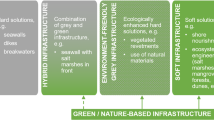Abstract
Removing small artificial barriers that hinder upstream migrations of fish is a major problem in riparian habitat restoration. Because of budgetary limitations, it is necessary to prioritize barrier removal and repair decisions. These have usually been based on scoring and ranking procedures, which, although simple to use, can be very inefficient in terms of increasing the amount of accessible instream habitat. We develop a novel decision-making approach, based on integer programming techniques, which optimizes repair and removal decisions. Results show based on real datasets of barrier culverts located in Washington State that scoring and ranking is over 25% below the optimum on average and a full 100% below in the worst case, producing no net habitat gain whatsoever. This is compared to a dynamic programming method that was able to find optimal solutions in less than a second, even for problems with up to several hundred variables, and a heuristic method, which found solutions with less than a 1% average optimality gap in even less time.
Similar content being viewed by others
References
NRC (National Research Council), Upstream: salmon and society in the Pacific Northwest, Committee on Protection and Management of Pacific Northwest Anadromous Salmonids, National Academy of Science, Washington, DC (1996).
WWF (World Wildlife Fund), The status of wild Atlantic salmon: a river by river assessment (May 2001).
NPPC (Northwest Power Planning Council), 1987 Columbia River basin fish and wildlife program, NPPC, Portland, Oregon (1987).
J.M. Anderson, F.G. Whoriskey and A. Goode, Atlantic salmon on the brink, Endangered Species Update 17 (2000) 15–21.
W.R. Meehan, ed., Influences of forest and rangeland management on salmonid fishes and their habitats, American Fisheries Society, Special Publication 19, Bethesda, Maryland (1996).
P. Roni, T. Beechie, R. Bilby, F. Leonetti, M. Pollock and G. Pess, A review of stream restoration techniques and a hierarchical strategy for prioritizing restoration in Pacific Northwest watersheds, North American Journal of Fisheries Management 22 (2002) 1–20.
T. Beechie, E. Beamer and L. Wasserman, Estimating coho salmon rearing habitat and smolt production losses in a large river basin, and implications for habitat restoration, North American Journal of Fisheries Management 14 (1994) 797–811.
E.G. Robinson, A. Mirati and M. Allen, Oregon road/stream crossing restoration guide: spring 1999, advanced fish passage training version, Oregon Department of Fish and Wildlife (Spring 1999).
WDFW (Washington State Department of Fish and Wildlife), Fish passage design at road culverts: a design manual for fish passage at road crossings, WDFW, Habitat and Lands Program, Environmental Engineering Division (March 1999).
NMFS (National Marine Fisheries Service), Guidelines for salmonid passage at stream crossings, NMFS, Southwest Region (September 2001).
R.N. Taylor and M. Love, California salmonid stream habitat restoration manual, part IX: fish passage evaluation at stream crossings, California Department of Fish and Game (2003).
USFS (US Forest Service), FishXing 2.0, Available at: http://www.stream.fs.fed.us/fishxing (August 2003).
G.R. Pess, M.E. McHugh, D. Fagen, P. Stevenson and J. Drotts, Stillaguamish salmonid barrier evaluation and elimination project – phase III, Final report to the Tulalip Tribes, Marysville, Washington (1998).
WDFW (Washington State Department of Fish and Wildlife), Fish passage barrier and surface water diversion screening assessment and prioritization manual, WDFW, Habitat Program, Environmental Restoration Division (August 2000).
P.M. Pardalos and M. Resende, eds., Handbook of Applied Optimization (Oxford University Press, Inc., New York, 2002).
P. Bettinger, J. Sessions and K.N. Johnson, Ensuring the compatibility of aquatic habitat and commodity production goals in Eastern Oregon with a tabu search procedure, Forest Science 44 (1998) 96–112.
R. Church, D. Stoms and F. Davis, Reserve selection as a maximal covering location problem, Biological Conservation 76 (1996) 105–112.
C. ReVelle, Optimizing Reservoir Resources (John Wiley & Sons, Inc., New York, 1999).
C.M. Paulsen and K. Wernstedt, Cost-effectiveness analysis for complex managed hydrosystems: an application to the Columbia River basin, Environmental Economics & Management 28 (1995) 388–400.
R.F. Raleigh, W.J. Miller and P.C. Nelson, Habitat suitability index models and instream flow suitability curves: Chinook salmon, U.S. Fish & Wildlife Survey, Biological Report 82(10.122) (1986).
D.P. Bertsekas, Dynamic Programming and Optimal Control, Vol. 1, 2nd edn, (Athena Scientific, Belmont, Massachusetts, 2000).
S. Martello and P. Toth, Knapsack Problems: Algorithms and Computer Implementations (John Wiley and Sons, Inc., New York, 1990).
WSDOT (Washington State Department of Transportation), Progress performance report for WSDOT fish passage inventory, WSDOT, Fish Passage Barrier Removal Program (April 2004).
S.C. Conroy, Habitat lost and found, part two, Washington Trout Report 7(1) (1997) 16–22.
Author information
Authors and Affiliations
Corresponding author
Rights and permissions
About this article
Cite this article
O’Hanley, J.R., Tomberlin, D. Optimizing the removal of small fish passage barriers. Environ Model Assess 10, 85–98 (2005). https://doi.org/10.1007/s10666-004-4268-y
Issue Date:
DOI: https://doi.org/10.1007/s10666-004-4268-y




